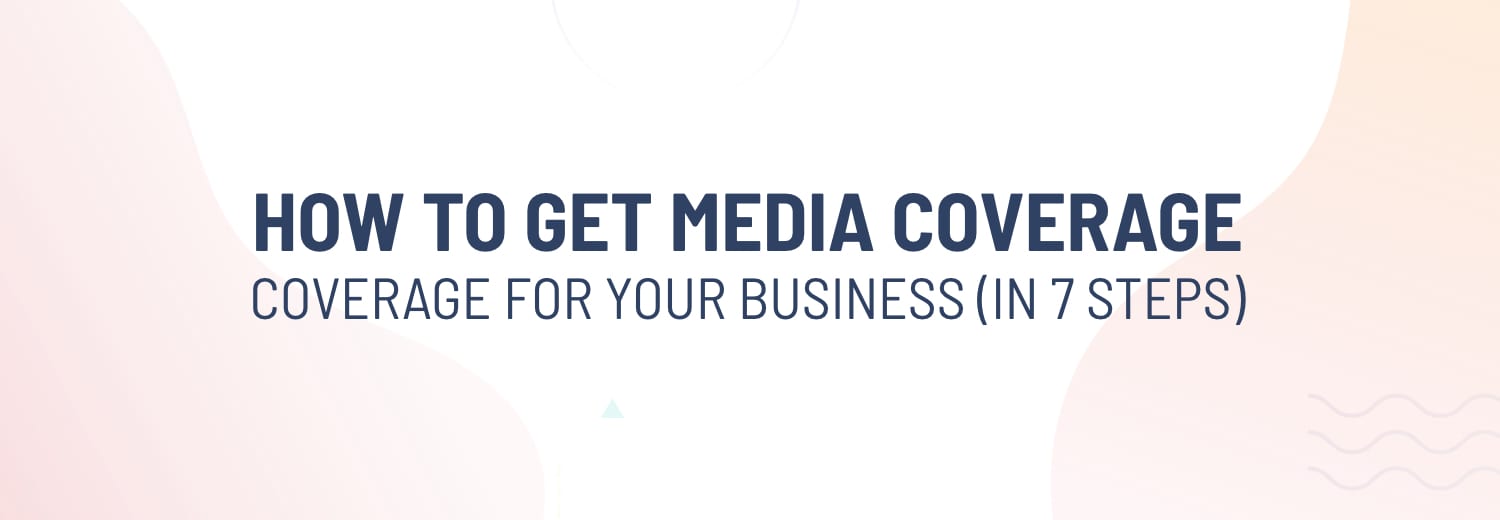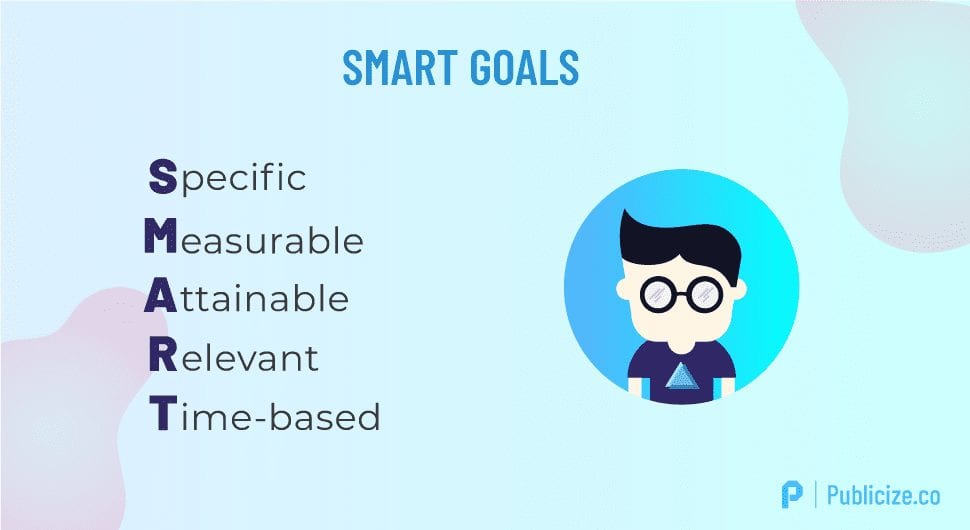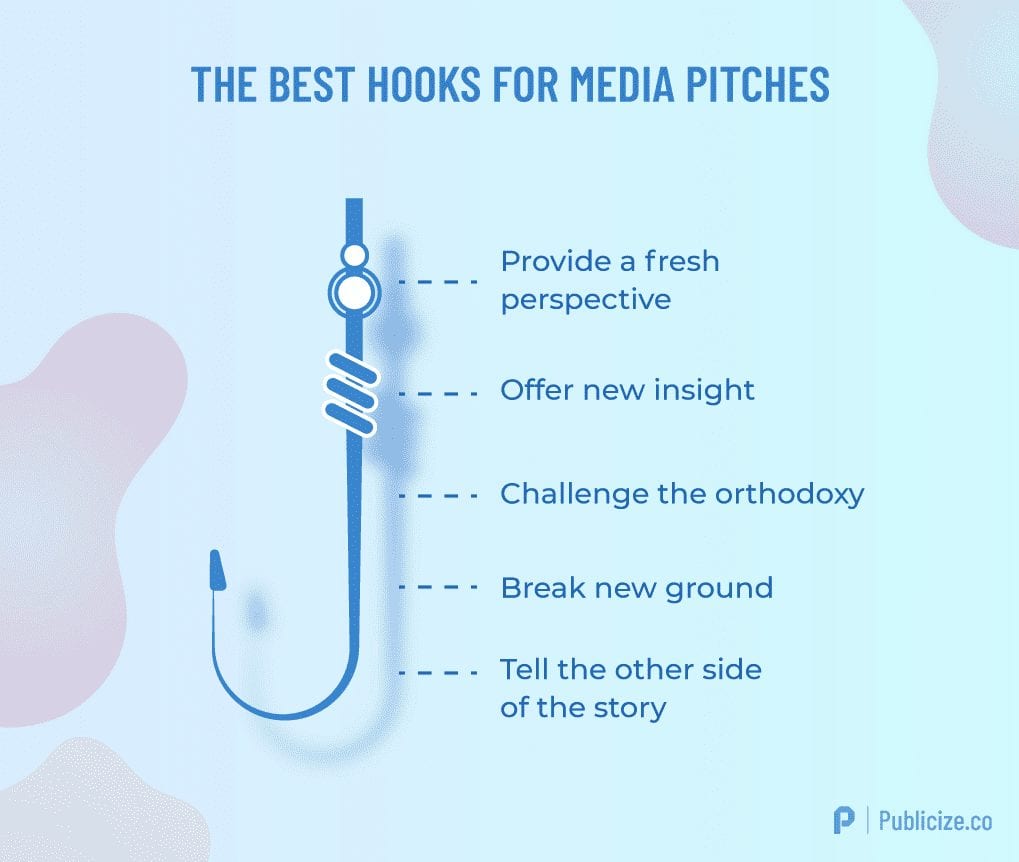If you want to listen to the audio version of our HOW TO GET MEDIA COVERAGE FOR YOUR BUSINESS (IN 7 STEPS) guide, press play here.
As a startup, small business, or even a marketing department in a large company, one of the biggest marketing hurdles you’ll encounter is getting media attention.
If your business fails to gain media coverage, it’s difficult to build credibility, awareness, and exposure. These are the cornerstones of PR and they’re the vital foundations that businesses need to lay down from day dot.
But it can be difficult to get media exposure using traditional PR methods if you’re a startup or a small business. Therefore, you need to be a bit more creative when thinking about how to get free press for your small business.
That’s why we’ve put this guide together. It provides you with the tools you need to win the media coverage you deserve.
Media coverage (otherwise known as press coverage), essentially means publicity. However, in the world of PR, we refer to press coverage as ‘earned media’.
Considering that, I suppose the better question is, ‘what is earned media?’
Well, after all is said and done, winning earned media is the end goal of all PR tactics.
It’s the practice of building up your company’s reputation through press coverage in third-party media publications.
This is not to be mistaken with owned media, which refers to any content that you publish on your own channels, such as your website.
Earned media vs paid media
I know what you must be thinking:
“You’ve already mentioned earned media and owned media… Now there’s a third one?’
Don’t worry, here’s a handy infographic to differentiate between the three:
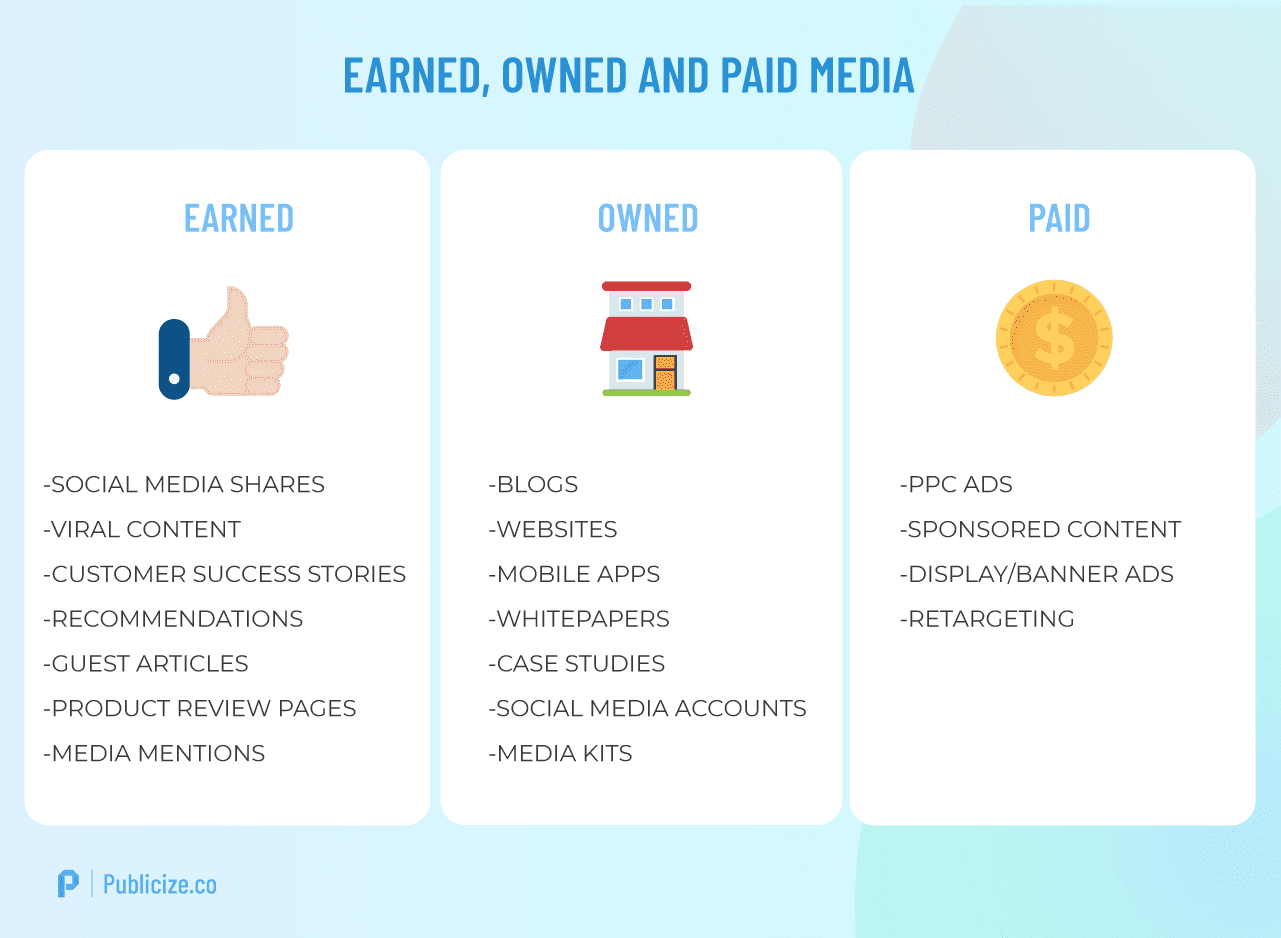
Earned media and owned media are both marketing tactics that achieve growth organically. Paid media, meanwhile, is advertising that is, well, directly paid for.
While paid media can be great for driving more traffic to your site, it’s reach and effectiveness can be limited.
Why?
Well, 40% of Americans use ad-blockers meaning that not everyone will see it. Furthermore, 92% of customers say they trust earned media more than advertising.
So while paid media can be very effective at driving traffic to your website, if you haven’t built sufficient trust with your target market, you’ll struggle to convert them. Customers want brands they can trust before they’re willing to part with their cash.
Media coverage is a great way to build that trust with your target market. After all, it’s not what you say about yourself that’s important, it’s what others say. That’s why a well-balanced marketing strategy should invest in each of these media channels for optimal results.
What are the benefits of earned media?
It’s difficult to count the benefits of earned media on one hand. But we’re going to try here:
Here’s a deeper dive into how earned media achieves these benefits:
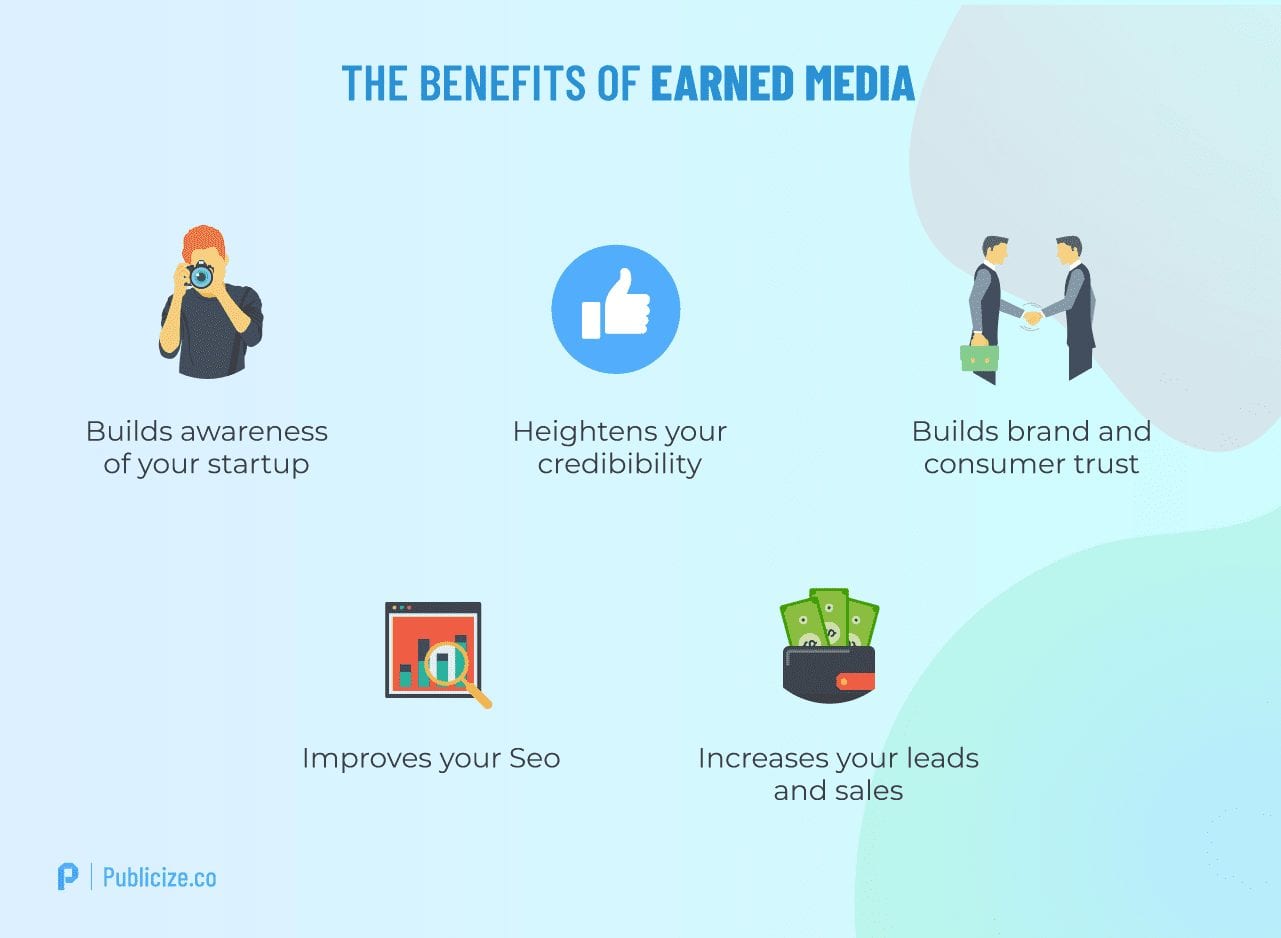
- Builds awareness – Earned media allows you to reach more of your target audience. Winning earned media across different media outlets opens you up to new customers by getting more eyes on your product or service.
- Heightens your credibility – Press coverage is invaluable while you’re trying to build your social proof. By producing thought leader articles for publications read by your audience, you demonstrate your industry knowledge and build credibility.
- Increases trust – Consumers like to buy from brands they trust. 92% of consumers trust earned media, while only half trust paid ads. Therefore, it’s clear that positive media coverage is an effective way for your business to build trust with your target market.
- Boosts your SEO – Earned media will have a positive effect on SEO if you go after the right type of press coverage. Winning press coverage on industry-relevant sites that have good domain authority scores helps you rise up Google’s rankings.
- Increases your leads and sales – The positive attributes of earned media all lead towards business success. Through increased visibility, credibility and a clearer identity, you’ll no doubt experience an increase in leads and, ultimately, sales.
You’re probably thinking…
‘This is all fine and dandy, but the question of how to get publicity for your business still needs to be answered’
Steady on! We’re getting to that now! So here’s how to get media coverage for your startup or business, in 7 simple steps.
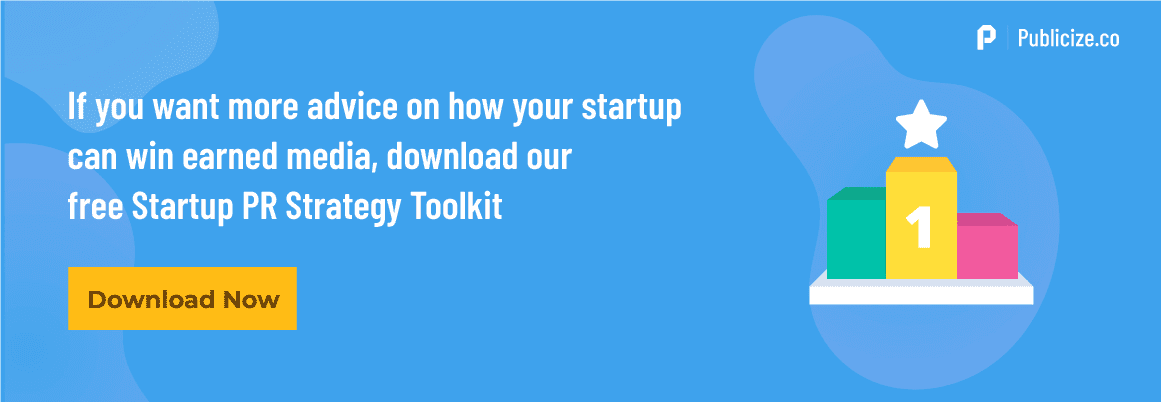
How to get media coverage for your business?
- Build your narrative using owned media
Before you start wondering how to get press, you need to get your house in order.
What do we mean by that?
I’m referring to your owned media.
This means making sure your internal messaging, branding, and in-house content is up to scratch. You may think it’s odd that a guide on how to win press coverage is focusing on the merits of owned media. But, trust us. It’s worth your while.
Think of it this way, if you’re pitching to journalists, they’re going to check out your site before deciding whether or not to write about you. If your website’s lacking in detail or just looks a bit amateur, they’re not going to be interested in giving you any media coverage.
Or let’s say you do manage to bag some press coverage. This then leads to an increase in referral traffic to your website. However, these increased users won’t generate more leads or sales if your website and branding reads like a 14-year-old’s Bebo page (a reference for the kids).
Therefore, the first stage on your journey is to go through your owned media content and make sure it conveys:
-Who you are
-What you do
-What your values are - Identify the most relevant journalists
Fail to plan, plan to fail. Yes, this is a tired old cliche we’ve heard time and time again. However, in the realms of PR, it couldn’t be truer.
The press coverage you win needs to be relevant to your business. It’s a waste of resources winning earned media that isn’t aimed at your target audience. Therefore, it’s essential you research where and how you want to win earned media.
We’ve written a comprehensive guide on finding relevant journalists within your industry. Here’s a quick summary of this. Firstly, identify the most relevant publications:
–Start off with what you know. Make a list of all the publications that you read or that you’re aware of which report on your industry.
–Snoop on competitor media wins. Use tools such as Google News or Moz to view the publications your competitors have won media coverage in.
–Widen the net to find related outlets. Use Similarweb to find online publications that are similar to the ones you uncovered in the above two steps.
Once you’ve got your list of publications, you then want to identify the most relevant journalists at these publications:
–Search for keywords. Select a few keywords that describe your business or industry, then search each publication with these phrases. Note down all the journalists that have reported on these stories.
–Finish up with hey.press and Anewstip. hey.press and Anewstip are tools that enable you to search for journalists by keywords, so enter the same keywords here as used in the previous step. Again, note down all relevant journalists. - Setup media monitoring
Let’s start off by defining what media monitoring is.
Media monitoring is where you listen to what others are saying about your brand, your competitors, your industry, and any other subject that is of importance to your business.
Media monitoring is quite simple when you break it down. Simply decide what you want to monitor, and then use the most suitable media monitoring tools.
For example, here at Publicize, we monitor our own brand, our competitors’ brands, and a bunch of industry terms such as:
-Startup PR
-Tech PR
-Silicon Valley PR
-Digital PR
Here are some tools you can use to media monitor: - Define your PR tactics for winning press coverage
If you’re scratching your head and wondering how to get earned media, this is the section for you.
There are a plethora of different types of earned media wins you can go after.
Here are some of the said tactics you can use to win media coverage:
–Guest Articles – This refers to a piece of content that you write, which is then published under your own name on a third-party media organization’s website. It’s widely considered to be one of the main “go-to” earned-media tactics and is one we use frequently for our clients. It helps you increase your credibility and exposure, and – if done properly – is great for SEO.
–Press releases – Press releases are the oldest PR technique in the book. However, there have been whisperings in the PR community that they no longer work. This isn’t true. Press releases still have their time and place if you actually have something newsworthy to announce – unfortunately, this is often only once or twice a year for the average startup. Furthermore, the sheer number journalists receive on a daily basis means that competition is high. Therefore, we suggest you use these sparingly and take time to learn how to write a press release.
–Podcast appearances – Being a guest on an industry-relevant podcast is a great way to showcase you and your business’s human side. Furthermore, it’s the ideal platform to flex your industry knowledge and establish yourself as a thought-leader.
–Product Reviews Page – Reviews are a great option for winning earned media because they cut through all the waffle and just focus on the specifications and benefits of your product and service (if the review is positive!)
–Newsjacking – This is when your media monitoring comes in handy. If there is an industry-relevant news story doing the rounds, consider these factors: do you have a new perspective? Do you have a counter-argument? If so, you can reach out for comment or even pitch a thought-piece analyzing the news story to a publication. This is great for building your exposure as well as brand trust.
–Interviews – Much like podcasts, interviews help you to show your human-side and show your industry knowledge. Do you or your company have a particularly interesting backstory? This is also something that you could convey in interviews. - Set REASONABLE goals
Do you have a checklist? If not, start one. However, make sure that the earned media wins you’re going after are realistic.
When it comes to setting goals for winning media coverage, make sure you set smart goals:
SMART goals are:
Specific
Manageable
Attainable
Relevant
Time-based
The wrong kind of goal is to ‘win more earned media’. A smart goal would be ‘get two guest articles published in two different high-ranking industry-related publications by the end of the month’. - Start building relationships with the press
PR professionals outnumber journalists 6 to 1 and, guess what, all of them are chasing earned media results for their clients.
The competition within any industry for earned media is fierce. Therefore, your chances of winning press coverage increase tenfold if you start making friends with journalists. And there is no time like the present!
In fact, you’d ideally want to make your first contact with a journalist a couple of months before you pitch to them.
Here are some ways you can break the ice with the press:
–Social Media – Social media is an extremely useful tool to reach journalists all over the world. Firstly, you can follow them on all their platforms. Then, interact with their posts (and with them!) Be complimentary of their work and share on your own channels.
–Connect with them locally – This is a great option if you’re looking to build exposure within your area. Attend events frequented by journalists or invite them to your own event. This helps put a face to your company and is a great opportunity to network.
–Use Haro – Journalists are always after sources for their stories. With this in mind, source request sites like HARO (help a reporter out) have become everyday practices for journalists. If you’re accepted as a source for a news story, it’s considered a classic PR ‘win-win’. Not only have you formed a new relationship within the media, but you’ve also won some press coverage! - Pitching to journalists
This is when the relationships you’ve established with the press really come in handy. Pitching to journalists is also one of the most important stages when trying to win earned media.
Why is that?
The editor or journalist you’re pitching to is the gatekeeper between you winning press coverage or being ignored. Editors are inundated with requests every day. You and your employees may think that your news, event or guest article idea is the bee’s knees.
However, I’ve got some news for you:
Journalists do not care about your business, startup or product.
I know it’s hard to hear but the sooner you realize that the more serious you’ll take the pitching stage. So always have in the back of your mind the PR mantra that “it’s a journalist’s job to tell stories, not promote products”.
Make sure you have a hook
As I just mentioned, the press is nonplussed about your startup. However, what they do care about is being pitched something newsworthy.
Think of it this way, telling a journalist, ‘we’re having an event’ is not newsworthy. However, ‘the event we’re hosting is the first tech startup network event in the city’ sounds more interesting.
This is called a hook (or an angle). It’s something that grabs the reader and makes them want to read on.
Here are some different angles you can take in your pitch:
Pitching to journalists etiquette
Probably the most important thing to remember when it comes to pitching etiquette is that your pitches are personal.
However, here are a couple of more rules of thumb when it comes to press etiquette:
–Make sure it’s relevant – You’re going to ruffle journalists’ feathers if you send them something not relevant to them.
–Don’t pitch to an outlet that doesn’t accept guest posts – Not only will this annoy the editor, but it’s also a waste of your time. To prevent this, read through contributor guidelines beforehand.
–Don’t pitch to two people at the same publication at the same time – But after a few weeks have passed, this is acceptable.
–Only follow up once – It’s perfectly normal to follow up on a pitch a day or two later. However, anything more than this will not be appreciated. PR professionals will tell you – you will get used to rejections. Take it and move on. - Bonus Stage: Following up on earned media wins
Well done if you’ve successfully won some media coverage for your business.
However, that doesn’t mean it’s time to put your feet up.
There are still a few things you can do while ‘running your victory lap’:
–Check they’ve included a backlink – As we’ve touched on, acquiring high-quality backlinks within your earned media has a positive effect on your SEO. Therefore, you need to double-check that any media wins include backlinks. Don’t take it as a slight if they haven’t! Simply send a follow-up email politely asking if they wouldn’t mind including one.
–Monitor the feedback – Take a look at the user comments on the publication’s website. If they upload it to their social media channels, take a look at what people are saying. This will give you an insight into how you’re being received, the areas you can improve and possibly give you ideas for your next earned media win.
–Blitz your own channels – Regardless of whether they post it to social media, you post it on your social media profiles ASAP! Again, monitor your internal feedback to see what your target audience is saying.
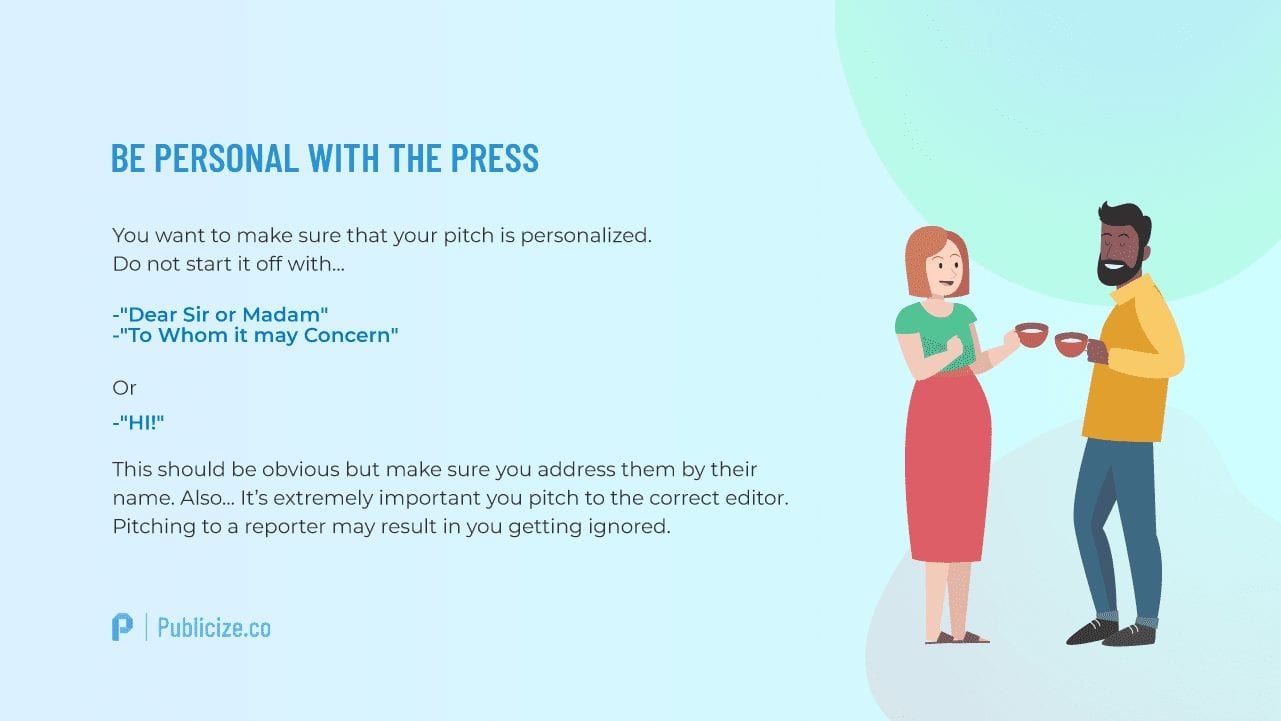
Wrapping up
Winning the right kind of press coverage can make or break a company. However, whatever you do, you cannot neglect the importance of exposure.
A well-researched earned media strategy also directly benefits your SEO and social proof. All of these help your business grow.
Pretty great, right?
We hope we’ve converted you to the church of earned media and we’re sure it’ll help you gather a new audience that worships your startup in no time. And now you know how to get press coverage, there’s nothing stopping you from getting free publicity for your business.


